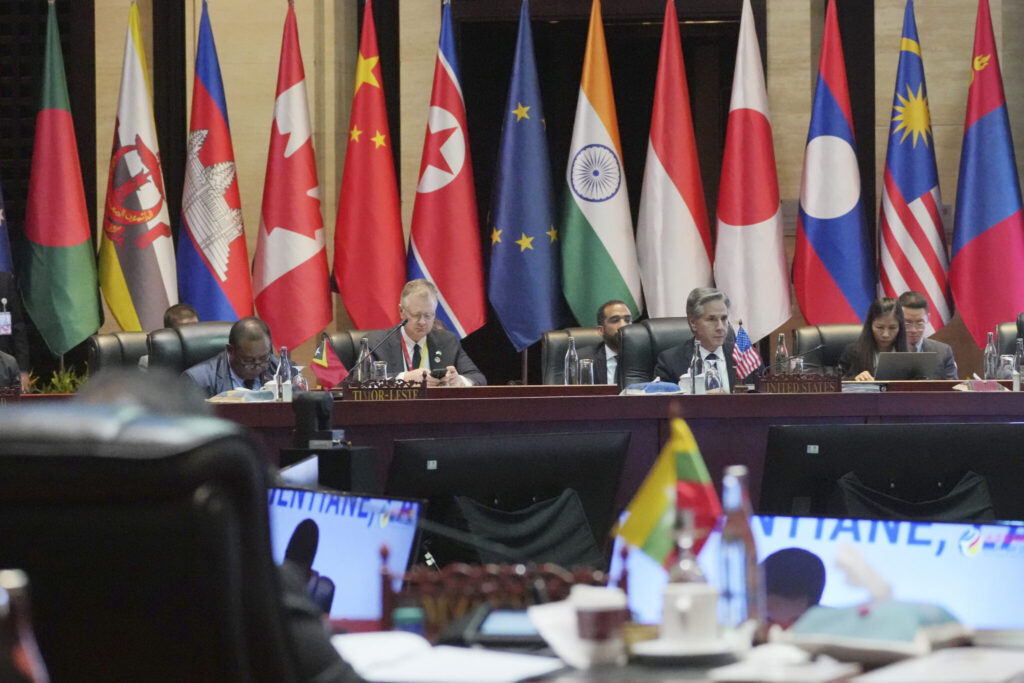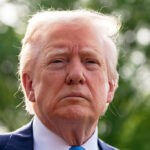Top diplomats from Southeast Asia met Saturday in the Laotian capital with their powerful dialogue partners in the last of the three-day regional talks that have grappled with tensions over territorial claims in the South China Sea, escalating fighting in Myanmar, and regional rivalry. Meetings on Saturday in Vientiane brought together in the same room allies of the Association of Southeast Asian Nations — including the United States, China, Russia, Japan, India and Australia — to bolster their relationships and discuss key security issues and other regional affairs.
Quick Read
- Top diplomats from Southeast Asia met in Vientiane, Laos, with powerful dialogue partners, including the US, China, Russia, Japan, India, and Australia, discussing key security issues and regional affairs.
- Lao Foreign Minister Saleumxay Kommasith urged participants to work together to sustain peace and stability for common prosperity.
- During a meeting with US Secretary of State Antony Blinken, Indonesian Foreign Minister Retno Marsudi emphasized the importance of respecting international laws regarding Ukraine, the South China Sea, and Gaza.
- Blinken expressed hopes to work closely with ASEAN nations on various issues, including Myanmar and North Korean provocations.
- Blinken also held talks with his Chinese counterpart, Wang Yi, to expand influence in the region, though details were not disclosed.
- Russian Foreign Minister Sergey Lavrov was also present and had previously met with Wang.
- ASEAN members have conflicts with China over the South China Sea, raising concerns about potential broader conflicts.
- There are divisions within ASEAN on dealing with China’s maritime claims, but China and the Philippines reached an agreement to defuse tensions.
- Philippines Secretary of Foreign Affairs Enrique Manalo and China’s Wang agreed to honor a provisional agreement to prevent further tensions.
- The Philippines successfully made a supply trip to the disputed area without confronting Beijing’s forces, which Blinken applauded as a success.
- The increasingly violent civil war in Myanmar was another key issue, with Thailand proposing more dialogue mechanisms involving countries sharing borders with Myanmar.
- ASEAN’s “five-point consensus” for peace in Myanmar has been largely ignored by the military leadership, raising questions about the bloc’s efficiency and credibility.
The Associated Press has the story:
Grappling with maritime disputes & Myanmar crisis, ASEAN top diplomat meetings joined by US, China
Newslooks- VIENTIANE, Laos (AP) —
Top diplomats from Southeast Asia met Saturday in the Laotian capital with their powerful dialogue partners in the last of the three-day regional talks that have grappled with tensions over territorial claims in the South China Sea, escalating fighting in Myanmar, and regional rivalry. Meetings on Saturday in Vientiane brought together in the same room allies of the Association of Southeast Asian Nations — including the United States, China, Russia, Japan, India and Australia — to bolster their relationships and discuss key security issues and other regional affairs.
Addressing the meeting, Lao Foreign Minister Saleumxay Kommasith urged all participants to actively work together to sustain peace and stability for the sake of their common prosperity. Kommasith said he hoped the meeting would be an opportunity for the partners to exchange views in a “candid, frank and constructive manner.” In a meeting of ASEAN foreign ministers with U.S. Secretary of State Antony Blinken on Saturday, Indonesia Foreign Minister Retno Marsudi said the bloc’s good partnership with Washington should also contribute to global peace. She said they should be respecting international laws “in a consistent manner,” whether about Ukraine, the South China Sea or the crisis in Gaza.
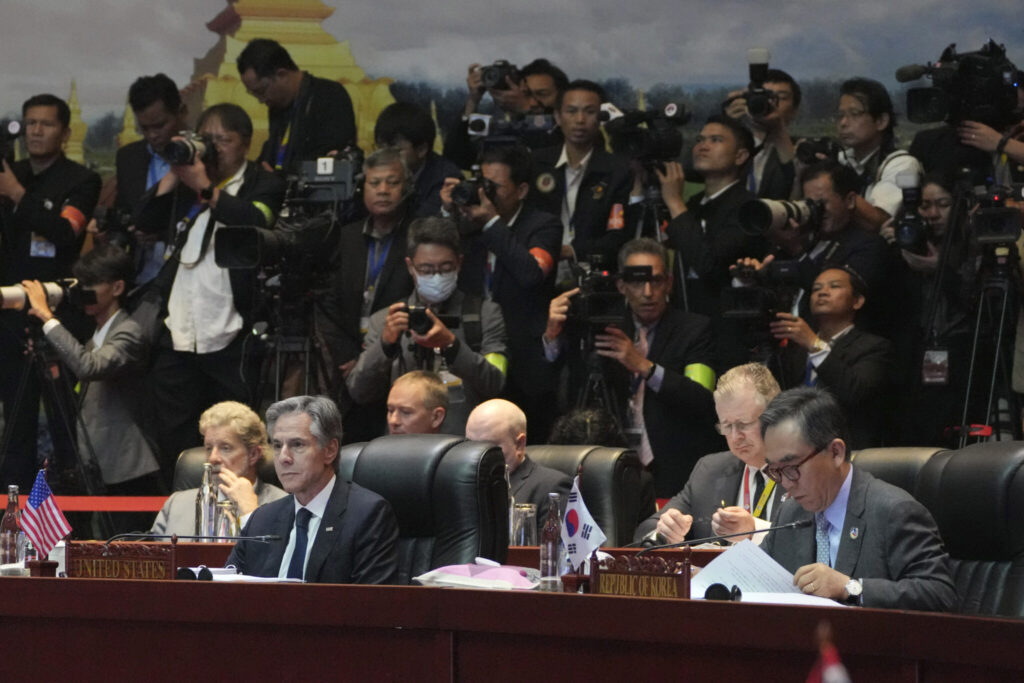
Blinken said he hopes to work closely with the ASEAN nations on those matters, as well as violence in Myanmar and provocations by North Korea. The Secretary of State also held talks with his Chinese counterpart, Wang Yi, as both countries are looking to expand their influence in the region. Details of their discussion weren’t immediately disclosed. Participants in these meetings represent either critical U.S. allies and partners, or Washington’s two largest rivals, Moscow and Beijing, which have grown closer over the past two years, prompting deep concerns about their combined global influence. Russian Foreign Minister Sergey Lavrov was also in Vientiane, and already held direct talks with Wang on Thursday.
Indonesia said it emphasized in their opening meetings Thursday that it’s important the bloc doesn’t get drawn into any rivalry between China and the U.S. ASEAN members Vietnam, the Philippines, Malaysia and Brunei all have conflicts with China over its claim of sovereignty over virtually all of the South China Sea, one of the world’s most crucial waterways for shipping. Many worry that direct confrontations there could lead to broader conflict. Indonesia has also expressed concern about what it sees as Beijing’s encroachment on its exclusive economic zone.
There are divisions within ASEAN on how to deal with China’s maritime claims. The Philippines has been critical over a perceived lack of support from the bloc, but in a rare deal, China and the Philippines said they had reached an agreement that they hope will end their confrontations, aiming to establish a mutually acceptable arrangement for the disputed area without conceding each other’s territorial claims. Philippines Secretary of Foreign Affairs Enrique Manalo said after the gala dinner on Friday that he had a bilateral meeting with China’s Wang, where they agreed that they would “honor the provisional agreement in a clear and sincere effort to defuse tensions and try and prevent any incidents of course from leading to further tension in our relationship.”
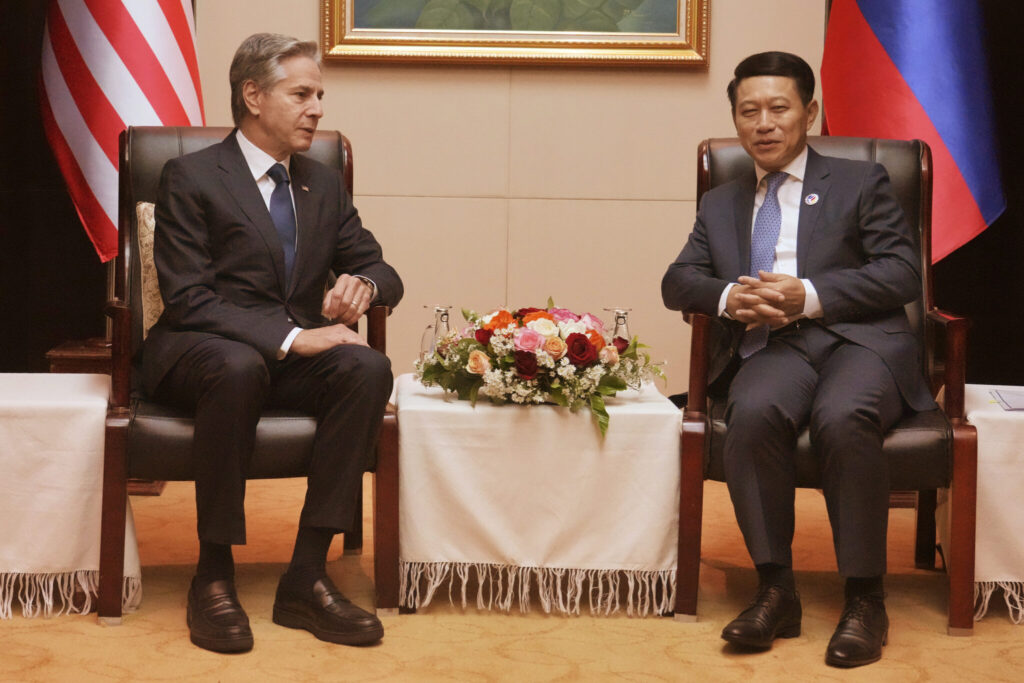
On Saturday, the Philippines said it was able make a supply trip to the disputed area without having to confront Beijing’s forces, the first such trip since the deal was reached a week ago. Blinken applauded it as a success in his opening remarks at the meeting with ASEAN foreign ministers, while calling China’s past actions against the Philippines — a U.S. treaty partner — “escalatory and unlawful.” Prior to the deal, tensions between the Philippines and China escalated for months, with China’s coast guard and other forces using powerful water cannons and dangerous blocking maneuvers to prevent food and other supplies from reaching Filipino navy personnel.
The United States and its allies have regularly conducted military exercises and patrols in the area to assert their “free and open Indo-Pacific” policy — including the right to navigate in international waters — which has drawn criticism from China. Wang said in his meeting with Manalo that the deployment of a U.S. intermediate-range missile system in the Philippines would create regional tension and trigger an arms race, according to a statement from the Chinese Foreign Ministry.
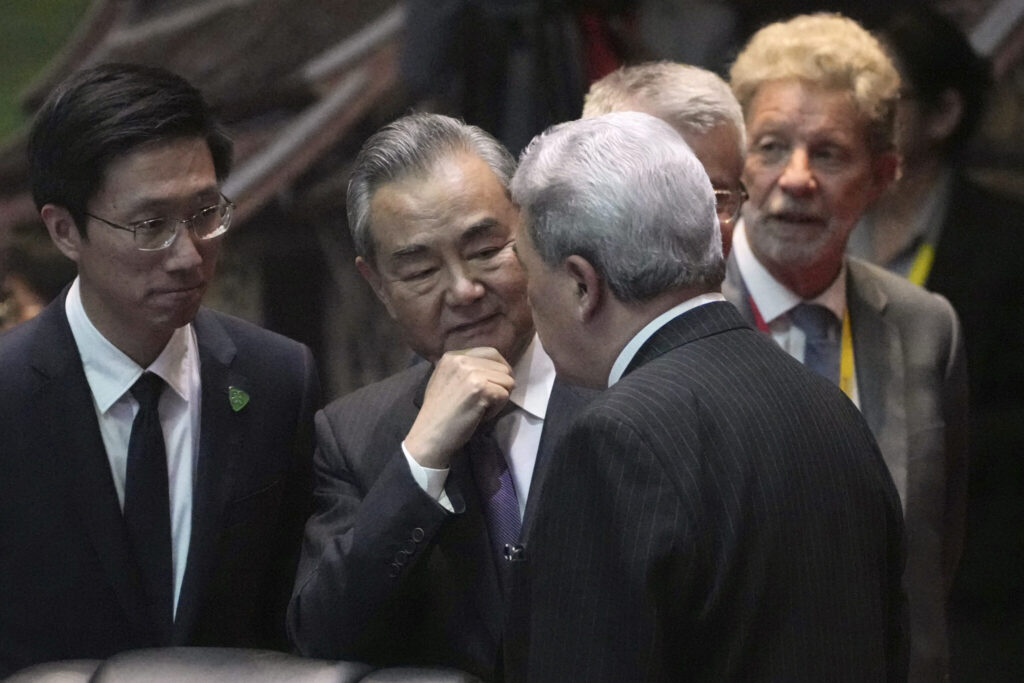
The increasingly violent civil war in ASEAN member state Myanmar is one of the other issues dominating talks. Myanmar neighbor Thailand said it was given ASEAN backing to play a wider role there, including in providing humanitarian assistance in which it’s already heavily involved. Nikorndej Balankura, spokesperson of Thailand’s Ministry of Foreign Affairs, told reporters Friday that more dialogue mechanisms have been proposed to Laos to include more stakeholders, especially countries that share borders with Myanmar. He said Laos would put these proposals directly to Myanmar for its approval.
The army in Myanmar ousted the elected government of Aung San Suu Kyi in February 2021 and suppressed widespread nonviolent protests that sought a return to democratic rule, leading to increasing violence and a humanitarian crisis. ASEAN has been pushing a “five-point consensus” for peace, but the military leadership in Myanmar has so far ignored the plan, raising questions about the bloc’s efficiency and credibility. The peace plan calls for the immediate cessation of violence in Myanmar, a dialogue among all concerned parties, mediation by an ASEAN special envoy, provision of humanitarian aid through ASEAN channels, and a visit to Myanmar by the special envoy to meet all concerned parties.

